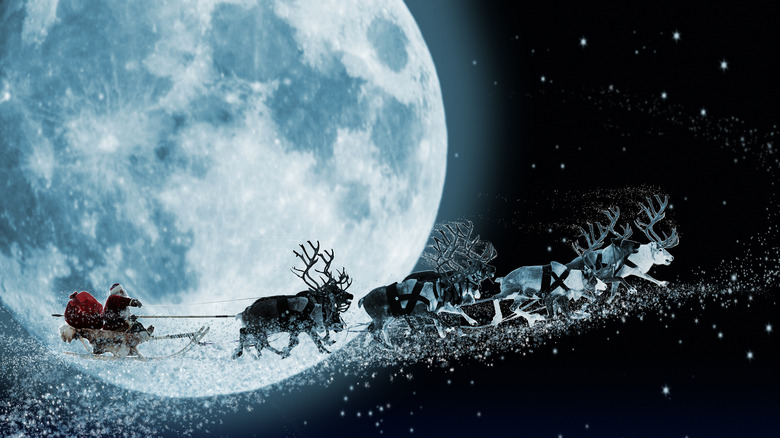How 'A Visit From St. Nicholas' Shapes Christmas Even Today
"A Visit from Saint Nicholas," more commonly known as "Twas the Night Before Christmas," is perhaps the most famous poem of the holiday season, read across the world in the days and weeks leading up to Christmas morning. The poem, which details a father witnessing Santa Claus leaving presents at his home, has not only become a Christmas tradition; it helped define much of our modern-day perception of Santa and Christmastime gift-giving, ever since it was published anonymously in 1823 (via Books Tell You Why).
While debate over who really wrote the poem continues to this day, there is no doubt that the poem shaped our modern perception of Santa Claus, turning the Greek St. Nicholas, known to give gifts but with no other connections to the Christmas season, into a child-centric holiday hero. The portly, jolly, bearded man climbing down the chimney was born in the verses of "A Visit from Saint Nicholas," and is the image that still dominates much of the world come December.
The poem named Santa's reindeer
Another bit of Christmas lore established by the poem, written by Clement Moore (or Henry Livingston, depending on who you believe), are the names of Santa's reindeer, as well as the concept that Santa flies around in a magical reindeer-powered sleigh in the first place (via Syracuse). The original eight reindeer were Dasher, Dancer, Prancer, Vixen, Comet, Cupid, Dunder and Blixem; the last pair have contributed to the authorship controversy, as they were later reprinted as "Donder" and "Blitzen," and eventually "Donner." Since Dunder and Blixem are Dutch words, and Henry Livingston was a Dutch immigrant, some point to this original spelling as proof of Livingston's authorship, though Moore had connections to the Dutch himself.
A ninth reindeer, Rudolph, would not make an appearance until the 1930s as part of a promotional storybook first distributed by the Montgomery Ward department store in Chicago (per NPR). In 1949, Rudolph was immortalized by the famous Christmas song, which has become so ubiquitous in the Yuletide season that many consider Rudolph to be one of Santa's "official" reindeer. Yet we wouldn't have Rudolph, or Dancer, or Comet, or even our image of Santa Claus without this mysterious poem, nearly two centuries old.

